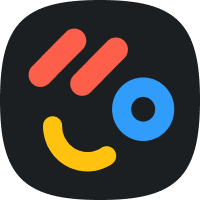Accessing your template settings
When viewing or editing a template, you will have a Settings drawer in the top-right corner of your screen.
Any settings you apply to a template will translate over to plans that you create from that template.
Note - you will be able to adjust each of these settings at the plan-level as well if customers have a unique need.

General settings
You’ll find 3 different tabs within the Settings drawer.
For your general settings, you’ll want to…
- click General
- add a template name (INTERNAL) - name your templates so you know which one is for what when you go to use them
- add a plan name (EXTERNAL) - this is what your customers will see when you create a plan for them from your template, it’ll appear in the welcome card and all email communications about the plan
- set a start date for your plan - the most common is to have a timestamp for the starting point “0 days” after plan creation, i.e. the day you create the plan - Learn more here about automatically setting plan start and target dates
- set a target date for your plan - this is to set high-level expectations for how long this process will take for your customers
- add your main brand color - this will change the plan background color, the task action buttons, and the check-marks on completed tasks to match YOUR brand colors!
Note - all of these settings auto-save as you update them besides the brand color. For the brand color, you need to press save after adding your hex-code.

Attribute settings
Template attributes are best described as “place holders” in your templates that can automatically be populated with information, so that you don’t have to it manually every time you create a plan.
They can be used in descriptions, task or phase names, and even inside of task action buttons!
The {{ customer.name }} is the easiest one to use as an example.
When you are editing a template, you’ll notice this attribute above the plan name in (in the welcome card at the top of your template).
In this example, we are also using this attribute in the plan name itself.

When you use this template to create a plan for a customer, the customer’s name is automatically populated into that attribute from HubSpot - once a plan is attached to a Deal or Ticket, we know the customer that it’s associated with!
In this example, Acme Co. is the customer. When we create a plan for that customer, their name is automatically displayed where those attribute place holders were.

To access the available attributes, you’ll want to…
- click Attributes
- plan attributes - this section will appear blank until you create custom attributes. Learn more about custom attributes here!
- coordinator attributes - these are the available coordinator attributes for you to use. Learn how to use coordinator attributes here
- copy button - when you hover over any attribute, you’ll see an option to copy that snippet so you can paste it accordingly in your template
- customer attributes - these are the available customer attributes for you to use. Use these attributes to reference a customer’s name in places besides the welcome card shown in the example above.

Other settings
There are optional/advanced settings available on templates and plans as well.
For these settings, you’ll want to…
- click Other
- comments - allow participants to communicate with you through task comments (on by default)
- re-assign tasks - allow participants to re-assign tasks to other plan participants (on by default)
- edit due dates - allow participants to change the due dates for tasks (off by default)
- sequential phases - future phases won’t be displayed in the plan overview until the tasks in the prior phase are marked completed (off by default) - learn more about sequential phases and how to leverage them here.
- access to files uploaded to arrows - by default, participants who have access to your plan can download files that are uploaded to the plans. To only allow your team members to download files, switch this to “Only members of [your company]”
- access to the plan itself - by default, anyone who has access to the plan URL can access the plan (once they confirm their email ). To make it so that only invited participants can access the plan, switch this to “Only invited participants” - learn more here

Keep in mind, any settings or adjustments you make for your Templates will apply to all customers that you create a Plan for based on that Template.
You can always adjust and edit specifics for individual customers by updating these same settings at the Plan level!
